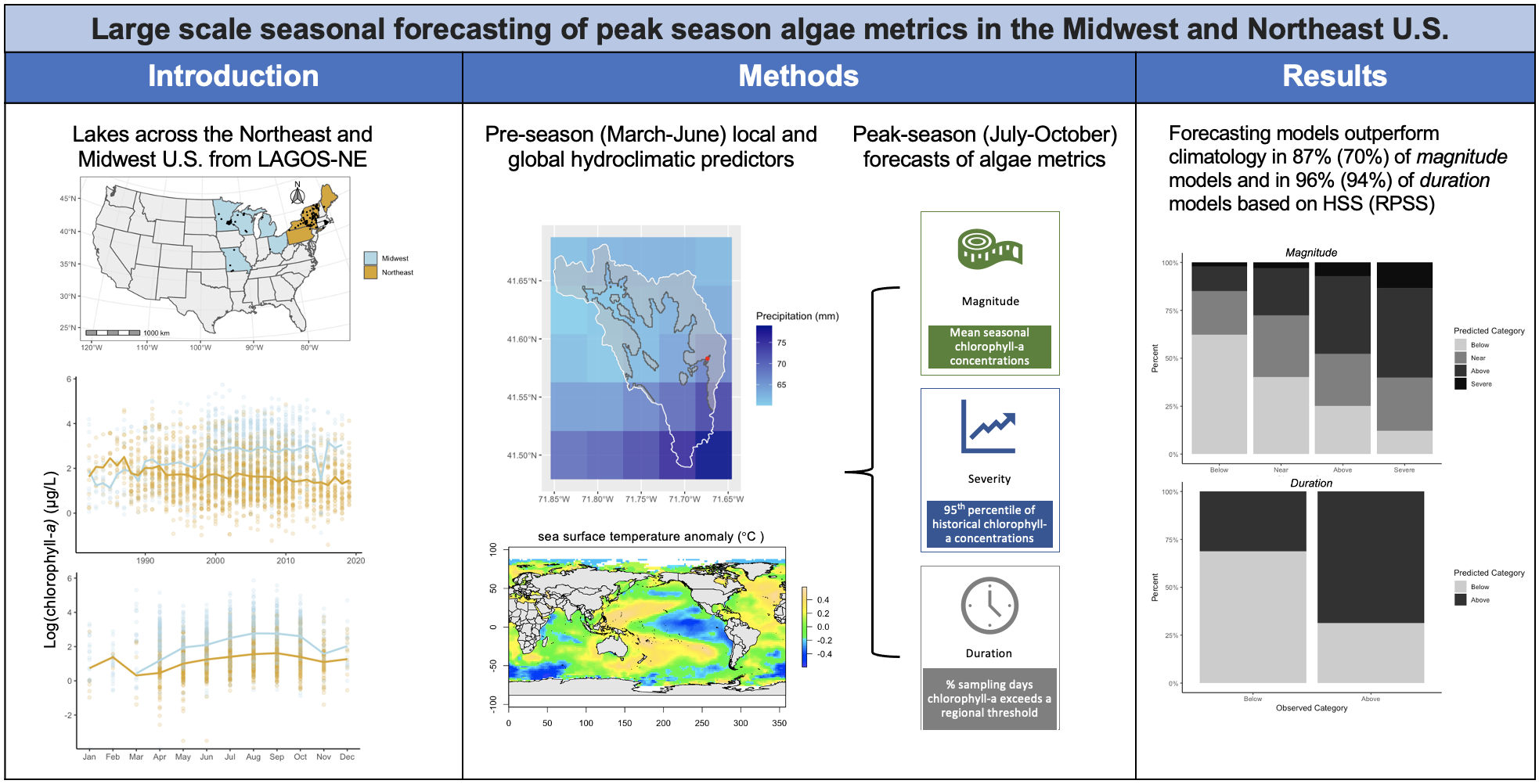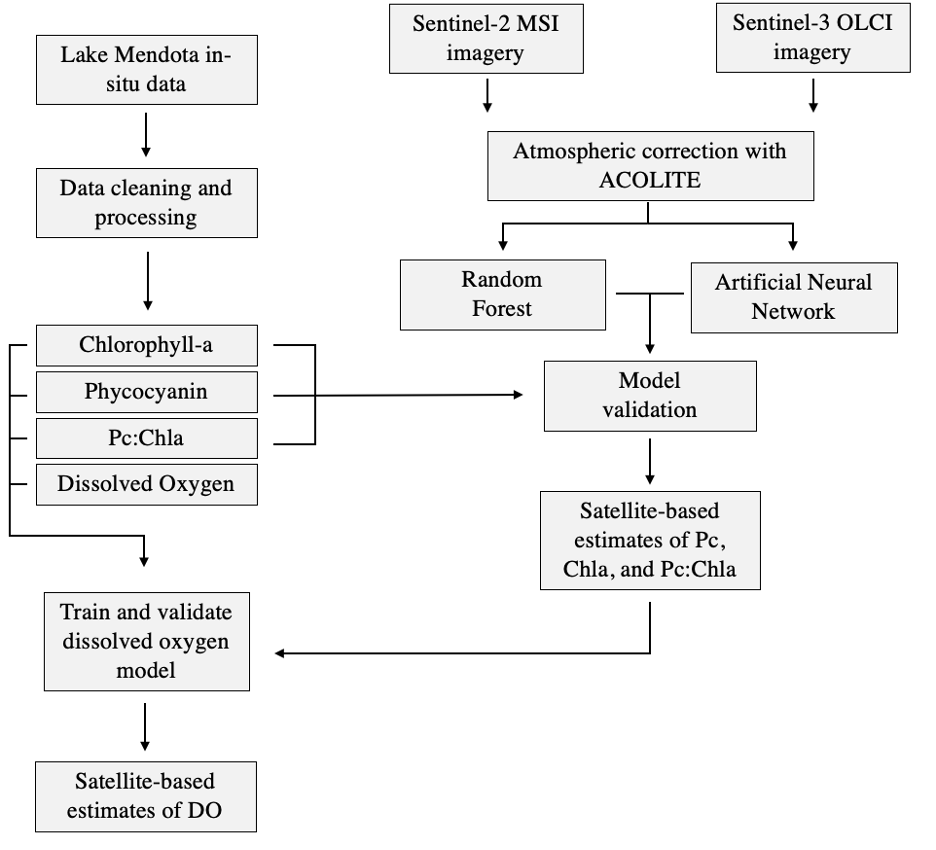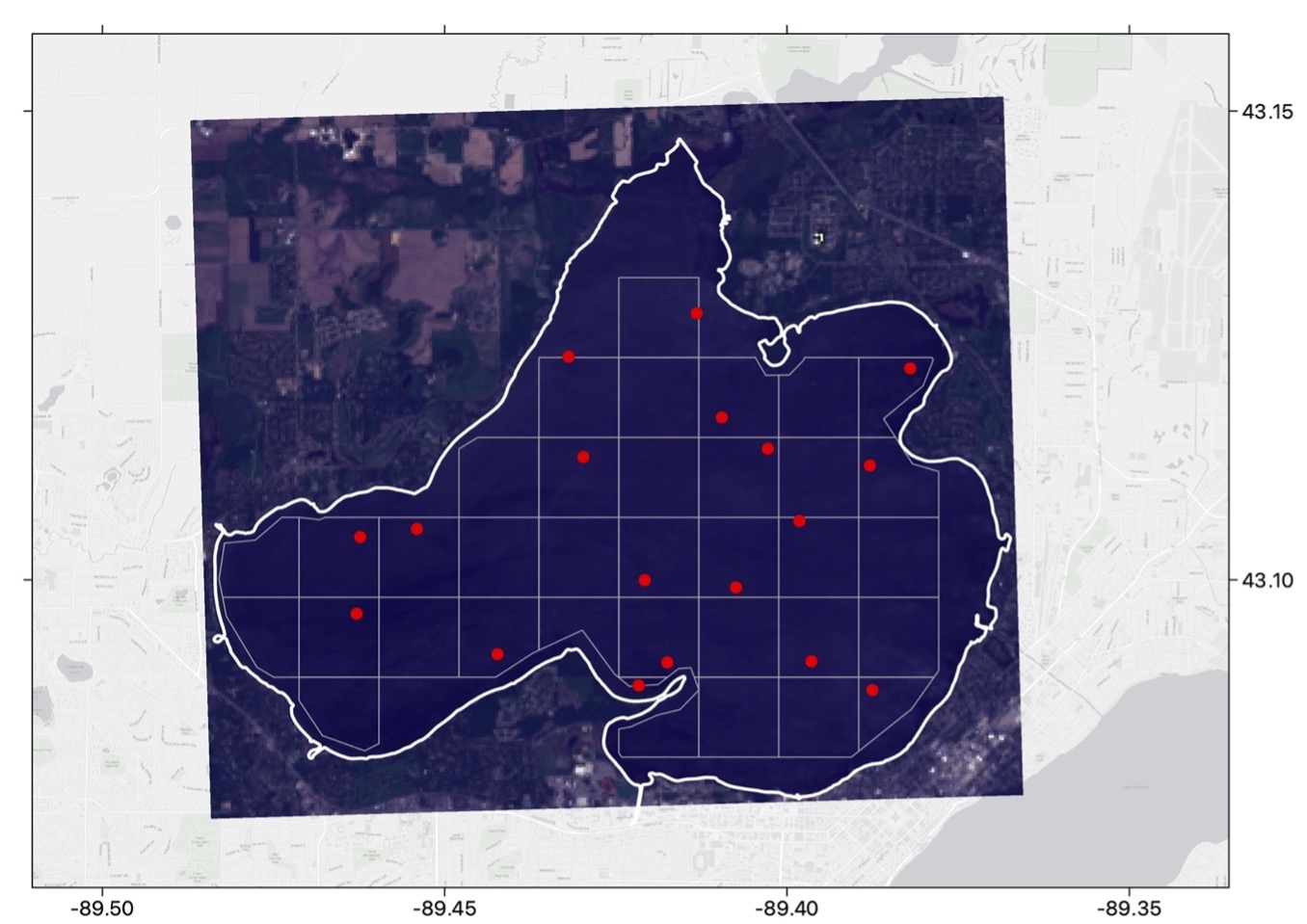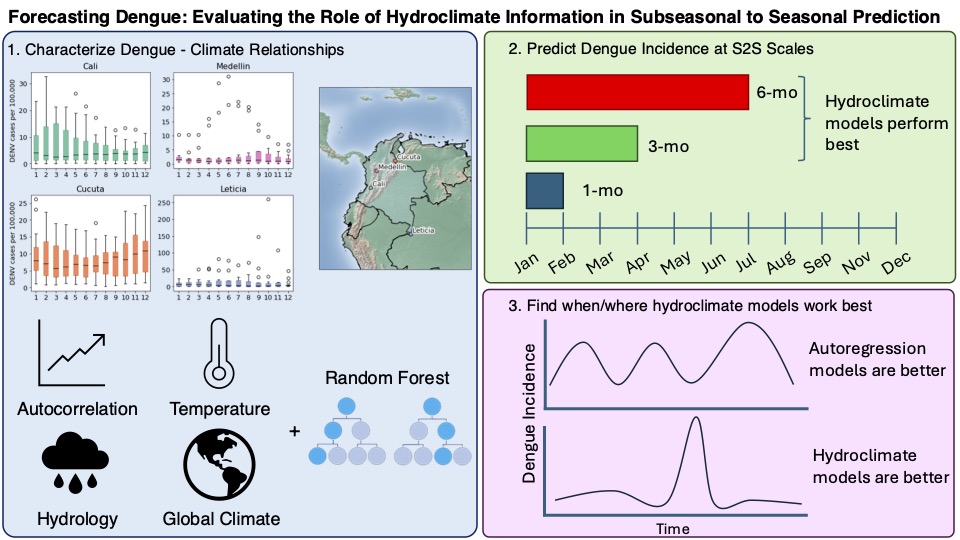Research topics
Hydroclimate variability on annual and seasonal timescales structure many biological systems, particularly those closely related to water. Links between hydrology, climate, and biological outcomes are often complex but can have significant impacts on ecosystem services and public health.
My research deals with understanding the influence of hydroclimate on ecosystem processes, water systems modeling for ecosystem extremes, and development of forecasting and monitoring tools for decision-support.
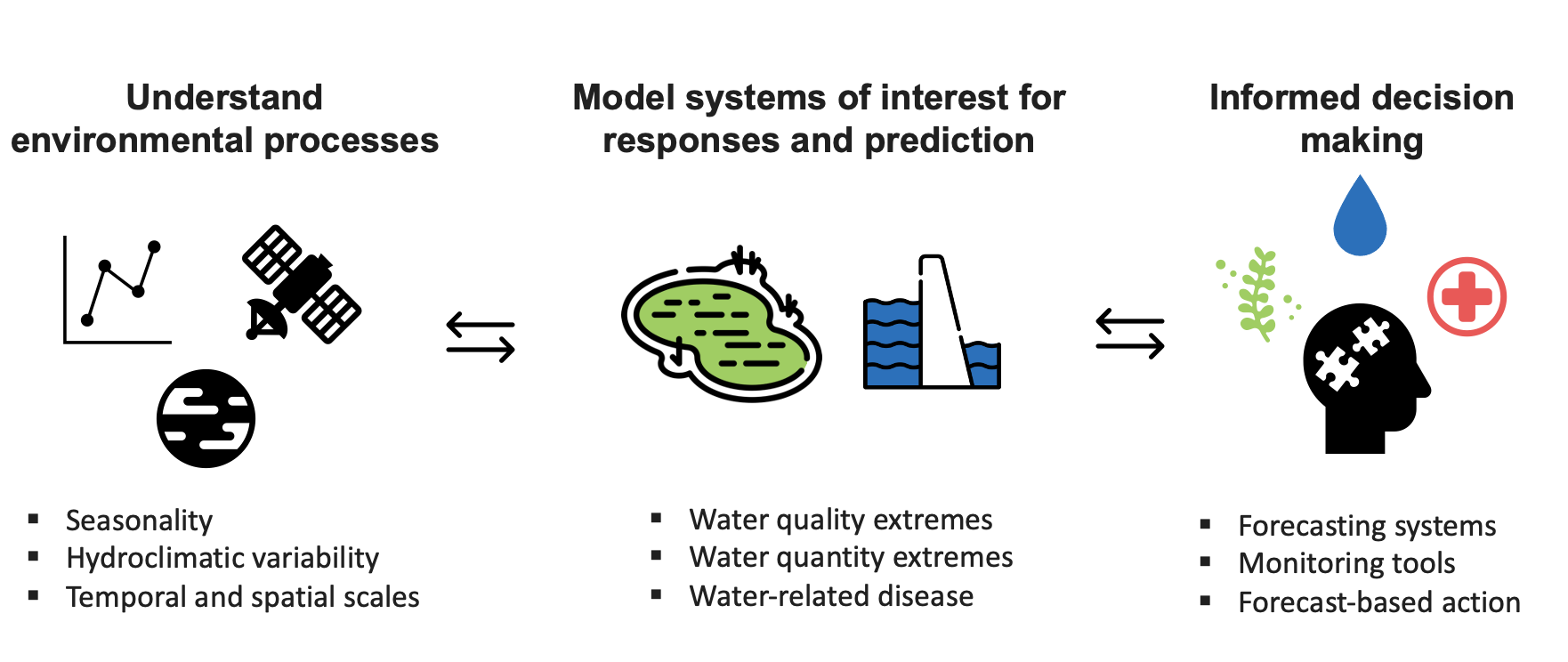
Below is a rundown of each of my major research areas, with published papers linked
